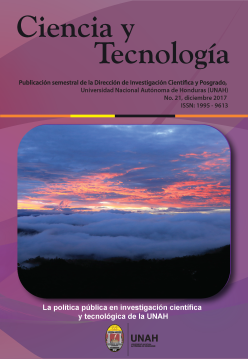Developing hydrological models available to university students
DOI:
https://doi.org/10.5377/rct.v0i20.5955Keywords:
Hydrological model, calibration, simulation and Nash-Sutcliffe efficiencyAbstract
The novelty of the implications and consequences of climate change has allowed, among others, the resurgence of mathematical modeling to predict with some degree of certainty different scenarios that facilitate planning to mitigate their different and complex effects. In the area of hydrology research and commercial offers of models adapted with new programming technologies and geographic information system have multiplied.
The objectives of the research are to propose two simple and hydrological models (A and B) that allow simulating average monthly flows. One is obtained by innovation and the other by simple concepts of hydrology; In order to show, above all, the university students of the areas that have to do with the water resource, that hydrological modeling is within their reach.
The model A to which innovation has been applied is based on the monthly water balance proposed by Thornthwaite and the model B is a very simple conceptual model based on the concepts of basic hydrology. Both models simulated the average monthly flows of the hydrometric station Los Encuentros in Agua Caliente. The Nash-Sutcliffe index allowed us to conclude that the results of the predictions are encouraging.
Downloads
810
Downloads
Published
How to Cite
Issue
Section
License
© Revista Ciencia y Tecnología
Authors who publish in this journal accept the following conditions: In accordance with the legislation of copyright, Revista Ciencia y Tecnología, recognizes and respects the moral right of authors, as well as the ownership of the patrimonial right, which will be ceded to the magazine for its diffusion in open access in printed version and in digital format. By being part of multiple indexers, databases and reference systems, the articles published by Revista Ciencia y Tecnología will be visible and will be downloaded from these websites, indicating, in all cases, the authorship of the articles, the date of publication and the number of the journal to which they correspond.




